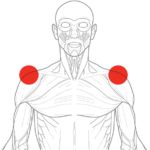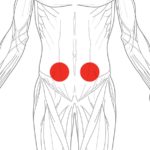Prehab vs. Rehab
Heather Raftery
While rehab aims to RE-habilitate an injury, prehab aims to PRE-habilitate your body so that you can prevent injuries altogether. Read on to learn more about the difference, and what makes a successful prehab program.

What is the Difference Between Rehab and Prehab?
If you’ve been training Brazilian Jiu-Jitsu long enough, you’ve probably experienced some kind of BJJ-related injury. For many practitioners, this is just a fact of the jiu-jitsu life. We rarely consider injury prevention beyond “tap early, tap often”. However, the best prevention for BJJ injuries is a well-defined, tailored prehab routine.
But, what exactly is the difference between rehab and prehab?
Rehab and Prehab Defined
Rehabilitation helps a person who has suffered an illness or injury recover their capabilities. Prehabilitation helps a person enhance their capabilities before a “stressor” occurs, in order to better handle it and recover faster. This “stressor” is often surgery, but it can also be inactivity following an surgery, or any intense pressure or force on the body during physical activity.
In other words, rehab helps a person following an injury or illness, while prehab helps him/her prior to an injury or illness, in order to prevent it. This idea of prehab originated in sports medicine. Coaches recognized that athletes needed to train smarter, especially before a competition, to prevent injuries.
Prehab for Injury Prevention
How does prehab help to prevent or reduce the risk of injury? And how do does it help in a sport like Brazilian jiu-jitsu?
Prehab corrects weaknesses or imbalances that make us prone to injury, like poor posture, a lack of muscular strength, poor flexibility and decreased general mobility. In our everyday life, these weaknesses may not affect our immediate quality of life. Therefore, we don’t think much about improving them, at least in the short term. In the long term, they accumulate. Ultimately, they affect our ability to get up from a chair, or even walk six minutes without having to stop. Then add jiu-jitsu training into the mix. As BJJ practitioners, the things we do impact our bodies in very dynamic ways; ways that the average person may never experience.
Prehab for BJJ Practitioners
Jiu-jitsu consists of a lot of pulling motions. We pull people into our guards, pull them against us to prevent an escape, pull ourselves into a favorable position or out of an unfavorable one, etc. This wears on our shoulders, and leaves us with strength imbalances that make us prone to shoulder injuries.
Then consider all the turning, twisting, and inverting we do. These all impact our knees, shoulders, wrists and ankles. Take a knee bar, for example. Your knee can be compromised by simply rolling free of the submission, or by your opponent twisting his or her torso. Think about attempting a takedown when your posture is already compromised. Sprawling face-first into the mat with someone on top of you, because you lacked proper posture, is even more damaging to your body. Or think about being in a stack pass when you can’t even touch your toes?
No matter how long you train on the mat, or how much you lift in the gym, you’re not going to correct the weaknesses or imbalances that make you prone to jiu-jitsu related injuries. Especially when you consider all the smaller, supporting muscles that help protect your joints from injury. I guarantee your S&C routine isn’t focused on developing those.
Enter BJJ Prehab.
Not all Prehab Programs Created Equal
Prehab programs vary, and rightly so. A prehab program should consider your beginning level, as well as your reason for the program. Generic prehab programs include warm-up exercises, aerobic work, strengthening exercises, flexibility exercises, and functional task training.
According to Mike Pellegrino, a successful prehab program achieves an optimal level of joint and muscular function…and maintains it. For BJJ practitioners, a great prehab program focuses on the following areas:
Building a strong and mobile core
Jiu-jitsu is full of movements that require core strength. You might be able to do 300 sit-ups, but that movement is in only one direction. We move in many different directions in jiu-jitsu. So, while you’ve strengthened some of the larger muscles, you’ve neglected all the other smaller muscles. Also, a core that is both strong and mobile helps us execute certain movements effectively, efficiently, and without putting ourselves into compromising positions.
Achieving flexible and elastic muscles
While some practitioners are more flexible than others, having flexible and elastic muscles is critical for all jiu-jitsu practitioners. Unless you’re a BJJ wizard, you can’t avoid a stack pass that bends you in half. You can’t avoid a guard pass that pushes the limits of your hip flexors, or even shoulder pressure from side control that twists your spine.
Improving posture and form
Maybe you’re a proud guard puller and you avoid takedowns. Thus you don’t see the acute need for good posture that takedowns demand. However, strong posture is necessary throughout jiu-jitsu. Try defending a triangle without it. And we often think about posture in terms of standing, but proper body alignment in general is incredibly important. Try shrimping out of side control when your shoulders aren’t aligned with your hips and your spine is twisted. Not only will your hip escape be ineffective, but it could also strain the muscles of your back.
Reducing sprains, strains, and overuse-related injuries
As I mentioned before, jiu-jitsu training impacts our bodies in ways that the average person will never experience. Our bodies move in so many ways, and our joints are pressured and forced in so many different ways. Sometimes they are intentional, sometimes they aren’t. There’s always the risk of sprains, strains, and overuse-related injuries. Without properly preparing the body, without strengthening all the supporting muscles, without developing flexible, mobile muscles, and without training the body to always seek proper posture and form, you are doing little to minimize these risks.
Conclusion
In sum, a tailored, well-defined prehab program – that takes into consideration the particularities of BJJ training – is the best defense against jiu-jitsu injuries, and will help keep you healthy and doing what you love. Check out some of the common questions people have about prehab before getting started.
Heather Raftery is an Atos black belt, freelance writer and social scientist (BA in Journalism and Anthropology, MA in International Studies). She has written for FloGrappling, Jiu Jitsu Magazine, Fighters Market and BJJ Prehab.









